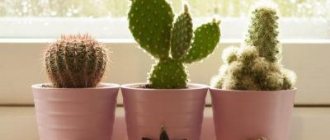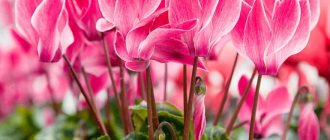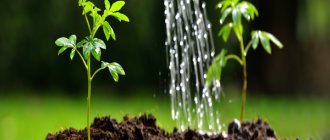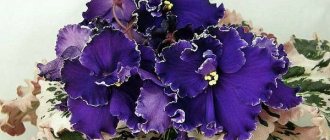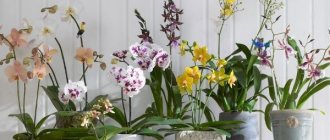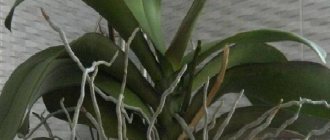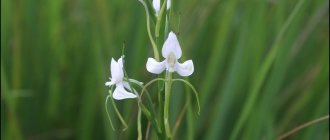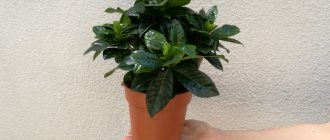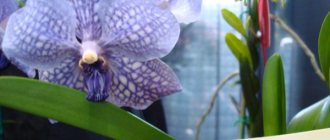Which orchid pot is better to choose?
When choosing a pot for phalaenopsis, you should start from the physiological characteristics of the plant. Under natural conditions, exotic butterflies grow epiphytically, without a pot or substrate. Their root system wraps around tree trunks and rock ledges. Therefore, a flowerpot is needed as a container for the substrate in order to create stability for the plant and direct growth in the right direction.
What to look for when choosing
For an orchid, you must choose a bowl that meets the following requirements:
- the container must allow air to pass through;
- the height of the vessel should be equal to the width of the neck;
- high light transmission;
- sufficient volume.
Most types of orchids cannot develop normally in darkened containers - the roots need light.
Root Safety
The size of the flowerpot for epiphytic plants should correspond to the size of the root system. You should not choose an empty container. When replanting, you should choose a container that is 1 cm larger in diameter than the previous one.
Necessary moisture drainage
The roots of the flower do not like waterlogging - it may die. Therefore, special flowerpots are sold for orchids, the bottom of which looks like a sieve. It is advisable that the drainage holes are located not only at the bottom, but also on the sides of the container.
Temperature
The root system is involved in photosynthesis - it receives all the useful substances from air and light for the development of the epiphyte.
What materials are they made of?
In a specialized store you can buy plastic, clay, ceramic, glass, and bamboo pots.
Plastic
The most common option. Some of the advantages include:
- transparent material does not interfere with photosynthesis;
- provides a good overview, you can monitor the condition of the roots;
- additional drainage holes can be easily made;
- The roots of the plant are always warm and do not grow to the material.
The plastic container ensures a stable temperature regime, preventing the roots from overheating or overcooling.
The only drawback is the lightness. Tall flowers may tip the plastic over, so it is recommended to add extra weight. To give it an aesthetic appearance, a plastic container can be placed in a beautiful ceramic pot. You can grow dendrobiums, cambrias, phalaenopsis, and some types of vandas in them.
Glass
A clear container will not interfere with photosynthesis, but it does require growing experience. The glass container does not have drainage holes, so it is important to watch not to overwater.
For multiple plants (double)
Double is designed for planting two phalaenopsis. Many novice gardeners confuse such a container with a plant pot that connects the container itself with a flowerpot (with a double bottom).
Such containers are aesthetically pleasing from the point of view of interior decoration. But when choosing, it is not always possible to guess what size will be needed for two plants.
Ceramic and clay
Growing epiphytic plants in a ceramic or clay pot has many advantages:
- the porous structure does not interfere with the flow of air to the root system;
- the material is heavy, which gives stability;
- prevents roots from getting too cold;
- fits well into interior design.
But the materials have their drawbacks. The fact is that orchid roots easily grow to the porous structure of the walls, so many of them are damaged during transplantation.
In addition, salts clog pores, which negatively affects air exchange and does not allow excess moisture to evaporate.
Flowerpots
Having bought a flowerpot for orchids, you can be sure of its stability - the flower will not fall, stain the furniture, or break. The size of the pot should be larger than the pot itself. It is advisable that you can stick your finger between the wall of the pot and the container. It is recommended to hang orchids near a window so that the root system receives the necessary amount of light.
It is wrong to think that a sufficient number of drainage holes will prevent stagnation of water. Water may accumulate at the bottom of the pot. To prevent root rotting, charcoal, perlite or broken shards should be poured onto the bottom. It is recommended to make the drainage layer 8 cm high.
The crown is an ideal pot for orchids. It is designed in such a way that a constant flow of air is provided to the roots of epiphytic plants. This is facilitated by the gaps located between the rods.
Made from bamboo
In the manufacture of containers for orchids, materials such as coconut, bamboo, willow, and rattan are used.
Advantages of flowerpots made from natural materials:
- good air exchange protects the roots from overheating and waterlogging;
- natural materials create an environment close to natural.
To reduce moisture evaporation, it is necessary to cover the top of the substrate with sphagnum moss.
Flaws:
- The root system easily grows to the walls of wicker pots. It is better to choose a smooth container, for example, made of bamboo.
- In natural flowerpots, the substrate dries out very quickly, so frequent watering is required using the immersion method.
- The soil spills out through the cracks and is washed out.
To preserve the substrate in a flowerpot, you need to cover the bottom of the container with burlap and lay down moss or bark.
Transparent plastic pots
Substrate for orchids - which one is best for growing?
Plastic containers are best suited for beginning orchid lovers. Thanks to a good overview, it is easy to control the condition of the roots and the amount of water for irrigation. Transparency does not interfere with the progress of photosynthesis in the roots of the plant. If the roots remain green, water early; the white color of the roots indicates the need for moisture.
Important! It is easy to make additional holes in the plastic to enhance drainage and ventilation.
Finally, the smooth walls of such containers do not allow them to become a substrate for ingrown root hairs.
Tropical beauties thrive in plastic pots
There is only one disadvantage of plastic pots - their lightness. A growing orchid makes this structure easily overturned, so before planting it, you need to strengthen the position of the plastic pot. For example, fix it with technical devices, bury it in an additional wide container with soil or stones, or equip it with a heavy flowerpot.
Design features of pots
To make caring for orchids easier, newfangled models and devices have been created.
Self-watering pot
The purchase of such a design is justified in the case of growing several orchids. A huge plus is saving time.
A flowerpot with automatic watering and phyto-lighting comes to the aid of busy people. You can safely go on vacation or a business trip and not worry that green pets will suffer from a lack of moisture and light.
Hanging models
The main advantage is stability; it will never tip over from the weight of the plant. It is recommended to purchase a hanging model if there is a mischievous kitten or small children in the house.
The best location for a flower is close to an east or west window. In this case, the orchid will receive enough light.
Miniature varieties are often grown in hanging pots. In order not to be afraid that moisture will accumulate at the bottom, you can pour a drainage layer of perlite, charcoal, in a layer of 8 cm.
Crown
Orchids look interesting in such a needle-shaped container. Compared to a plastic pot, the crown fits well into the interior. Good enough for growing flowers. Watering the orchids is done through the tray that comes with the kit.
To prevent soil from falling out of the cracks and creating an unpleasant sight, the size of the fractions should be slightly larger than the inter-needle space.
With phyto lighting
This design is convenient in conditions of lack of natural light. The backlit model ensures normal development of plants in autumn and winter. It can be used as a night light. The only negative is the high cost.
Hanging planters
A flowerpot is a second, outer pot, a “shell” in which a container with an orchid is placed. Pots for orchids - transparent or made of colored plastic, glass or wicker, clay - serve primarily as a decorative element.
The “case” should be about 2–3 cm larger than the pot so that air can circulate freely between their walls. At the bottom of the pot there is a recess for draining water, then it evaporates and re-moistens the soil. The flowerpot itself should not have holes - this allows it to be hung.
Pot crown
A popular and very decorative model of a flowerpot is a crown pot for orchids, with a tray. It is a “fence” or palisade made of plastic or wooden slats, mounted on a round base.
A flower crown of a soft green color will provide comfort to the plant and will not overshadow its beauty.
In such a pot, you need to position the soil correctly to prevent it from spilling out. To do this, large pieces of bark and moss are placed closer to the walls, and smaller fragments of soil are placed in the middle of the container.
Hanging planter
It’s easy to make any flower pots hanging. To do this, they are suspended from the ceiling or walls using special mounts. Usually small and medium-sized plants are grown in hanging pots. This allows you to save space in the apartment, but you should immediately think about the moment of watering - after all, the flower pots need to not only be hung, but also removed in order to moisten the soil.
With automatic watering
Orchids love spraying, but it’s better to do it twice a day. Not everyone has this opportunity, but you can buy a flowerpot with automatic watering. With such equipment, you can avoid approaching the orchid for two weeks, for example, if you need to go on a business trip or on vacation.
Automatic watering comes in a variety of modifications, but the principle is always the same. These are two pots (double pot), connected as communicating vessels, in one the plant “lives”, in the other there is a supply of water. The system is equipped with an indicator indicating that self-watering is required. When the indicator is triggered, capillary saturation of the soil with water begins. It can come not only from above, but also from the sides.
Important! The automatic watering system is only suitable for mature plants whose roots have reached the drainage layer.
Does pot size matter?
The selection of containers for planting orchids is selected in accordance with the size of the root system. The height of the plant and the number of leaf blades do not play any role in this. If the flower is very tall, additionally buy flower pots to give it stability.
The orchid is transplanted into a flowerpot whose diameter is slightly larger than the previous container. If you transplant into a container that is too empty, there is a high probability of root rotting. In addition, there will be no flowering until the roots completely fill the space provided to them.
Glass containers
Fuchsia in a pot outside - how to care for it and what pot to plant it in
Growing orchids in glass flowerpots is aerobatics. And it is available only to orchid growing pros.
Orchids in glass look elegant and will decorate any interior
Through the glass, the roots of the plant and the unusual soil on which orchids are grown are clearly visible. In addition, the sun's rays freely flow through the absolutely transparent material to the photosynthetic roots. Glass containers are heavy and hold a tall plant well.
However, all these advantages are crossed out by the inability to “organize” additional holes in the glass vessel. In practice, this means the need for careful dosing of watering - every drop must be taken into account and overflow must be avoided.
Important! An increased layer of drainage material should be placed in the container. Incorrectly calculated watering - and mold appears on the roots of the orchid.
Do you need holes in an orchid pot?
A prerequisite for the normal development of epiphytic butterflies is the presence of drainage holes in the bottom. This is due to the physiological characteristics and characteristics of the root system - excess moisture should evaporate and the roots should be well ventilated. Without a sufficient number of holes, such results cannot be achieved.
How to make a hole in an orchid pot
Lots of holes are needed at the bottom of the container. Air exchange occurs through them and excess moisture evaporates. Therefore, it is recommended to drill a lot of holes even in a glass container. This can be done using special tools.
Types of orchids
Orchids are divided into the following varieties:
- Epiphytes - they seem to be in limbo. They do not require a large volume of substrate, so you can get by with a small-volume vessel.
- Lithophytes - prefer to climb trees and rocks with the help of a powerful root system. Take root in soilless places. The roots are constantly aerated and do not overheat.
- Mixed species - such flowers grow both in the ground and in a suspended state. The root system sticks to the rock and fills all the crevices.
So, before purchasing a pot, you need to understand what kind of orchid it is intended for.
How to choose a pot to match your interior, photo
The stores offer a wide selection of flowerpots and pots for orchids - floor-standing, plastic, hanging, wicker, wooden, clay, ceramic. When choosing, you must adhere to the following rules:
- stylistic combination – figured flower pots can decorate a child’s room; for a hall or living room, it is recommended to choose a simple model with strict lines;
- neutral color will be appropriate in any room;
- if several orchids will be located in one room, all flowerpots should be from the same collection.
Flower growers with design skills can easily select the right combination of shapes and styles.
Which pots should you not choose?
If the size of the pot and the root system do not match, phalaenopsis may stop flowering and get sick.
Pots not suitable for epiphytes:
- the inner surface of an unfired ceramic pot has roughness, which promotes root germination;
- It is very difficult to maintain aeration in glass pots;
- the elongated container does not provide sufficient air and moisture exchange.
As a result of improper maintenance, the root system rots, plants lag behind in growth, and flowering stops.
How to make it yourself, video
Designers have created original pots for orchids. Every gardener can make a container with his own hands from available materials - plastic containers or food baskets.
The main condition is drainage holes. Many people like coconut shell pots. But such structures are not suitable for orchids, since the roots grow into the porous structure and can be damaged during the next transplantation.
Some types of orchids cannot grow in wicker baskets. The fact is that in such pots the moisture evaporates very quickly, the rods themselves crack and become unsightly.
The video shows how to make an orchid pot with your own hands.
When growing orchids, it is necessary to adhere to agricultural techniques. To ensure good development, lush and abundant flowering, you need not only to choose the right location and provide watering, but also to choose the right pot. A suitable container is the key to the health of orchids.
